Healthy You
Your guide to living well







Healthy You is an award-winning magazine featuring health and wellness articles and promoting practical tools that support and encourage healthier choices.
This educational resource for UMR members is published four times a year as part of our member online services and can be viewed, downloaded and shared digitally.
Healthy You is packed with helpful resources and practical recommendations to address the most common health topics, including:
• Building healthy habits
• Preventive care recommendations
• Chronic health conditions
• Exercise tips
• Nutrition and recipes
• Stress and mental health management
• First aid and getting care
• Health literacy
• Spanish-language resources

While using this electronic publication, you may click on a link to other websites. We provide links to other websites that may contain information that may be useful or interesting to you. We do not endorse, and are not responsible for, the content and accuracy of linked websites operated by third parties or for any of your dealings with such third parties. You are solely responsible for your dealings with such third parties, and we encourage you to read the terms of use and privacy policies on such third-party websites.
Available features and benefits are dependent on the products and features included in the plan design. Not all members will have access to all features shown.
Copyright © 2024 United HealthCare Services, Inc.
Reproduction in whole or part is not permitted without permission in writing from UMR. All information and links were accurate and functional at the time of publication. However, because this electronic publication contains links to third-party sites, information can change and become unavailable.

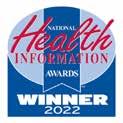

Track all your claims in one place

Check in at your convenience to see if a claim has been processed and what you might owe. You can search the claim activity for everyone on your plan, view your claims cost summary or submit a new claim.
Check out this FREE resource.
Sign in to your member account on umr.com.
Welcome to a smarter, simpler, faster way to manage your health care benefits, right from the palm of your hand.

The UMR app has a smart fresh look, simple navigation, and faster access to your health care benefits information. View your plan details on demand – anytime, anywhere.
With a single tap, you can:
• Access your digital ID card
• See a personalized list of Things to do to stay on top of your health and keep your benefits up to date
• Look up in-network health care providers
• Find out if there’s a copay for your upcoming appointment
• View your recent medical and dental claims
• Chat, call or message UMR’s member support team

Download the UMR app today!
Simply scan the QR code or visit your app store to get started.

Act like a kid again
• Find a park and hop on the swing set.
• Play catch or learn Frisbee golf.
• Go fishing for an hour or two.
• Try out pickleball.
Many of us like to get outside and enjoy warm weather, but it’s not always easy to squeeze in outdoor activities.
Here are a few ways to experience summer, even if you’re short on time:
with your food
• Find a local food truck and eat outside.
• Eat a meal outdoors at home or at a park.
• Go to a farmer’s market to buy your produce.

Slow down
• Sit in the shade and read a book or listen to your favorite music.
• Take your pet for an extra long walk.
• Walk to the grocery store instead of driving.
• Ride your bike to work.
Take advantage of outdoor events
• Go watch a baseball game.
• Attend an outdoor concert.
• Cruise to the drive-in and watch a classic movie.
Enjoy nature
• Visit a zoo.
• Sit on a bench near a lake or river and watch the wildlife.
• Snap pics of flowers at a nature center.
• Watch the sunset outside your house or apartment.
• Take a lawn chair to the beach and enjoy the sunshine.
Stay safe while enjoying summer outdoors
• Always carry a phone with you.
• Bring along a bottle of water to stay hydrated.
• Wear sunscreen and insect repellent.
• If out at night, carry a flashlight and wear reflective clothing.
Chronic pain is defined as pain experienced most days or every day during the last three months.
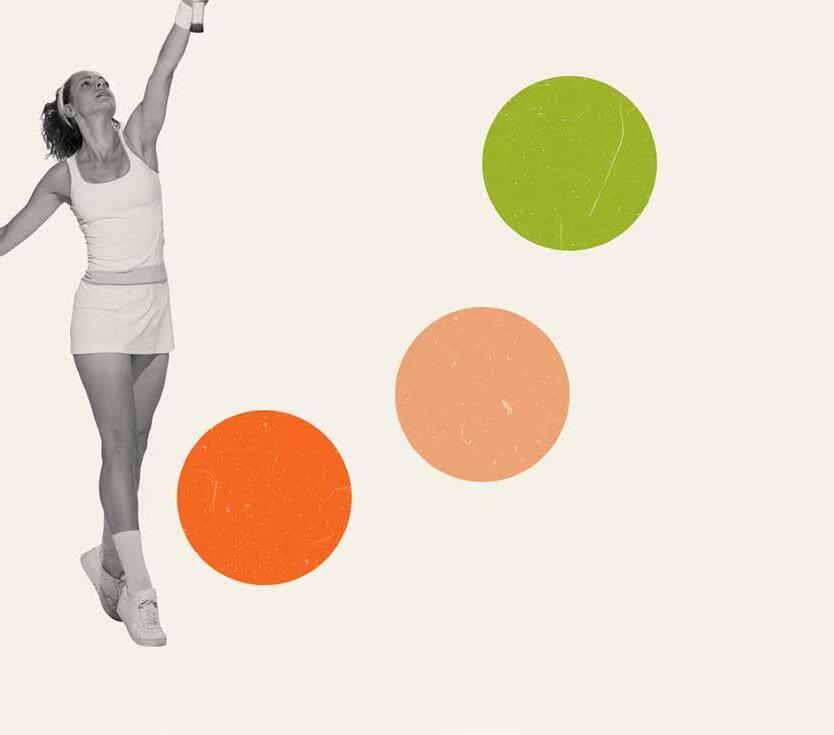
. . . . . . . . . . . . Pai n , p a i n ,

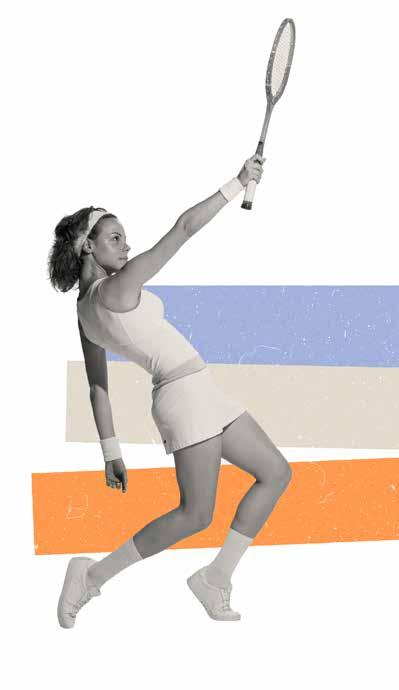
Aerobic exercise is medium-intensity physical activity that raises one’s breathing and heart rate.
A recent National Institutes of Health study found that new cases of chronic pain outnumbered other chronic conditions, like diabetes, depression and high blood pressure. Is there anything those with chronic pain can do to reduce their pain without medication or surgery? Consider exercising.
Exercise can feel daunting at the best of times, and even more so for someone with a condition that causes chronic pain. But when done correctly, the right amount of exercise can actually offer relief.
The National Library of Medicine recommends regular physical activity to treat chronic pain, especially for people with chronic musculoskeletal conditions like fibromyalgia and low back pain. One exhausting exercise session while in chronic pain can make pain worse; however, regular exercise may promote pain relief for those in chronic pain. The tricky part is getting the right amount, as certain movements or over-exertion can increase pain.
o a w a
According to the U.S. Pain Foundation, more than 51.6 million Americans live with chronic pain.
Focus on light aerobic and stretching exercises and slowly increase the length and intensity of your routine. And remember to talk with a doctor before significantly increasing your activity level. This is especially important for those with underlying medical conditions. You should ask about the amounts and types of activities that may be best for you.



Start with 5-10 minutes of physical activity each day, whether it’s doing housework, parking farther away or taking the stairs. Every bit can build you up to longer exercise sessions.


Below are some aerobic and stretching exercises to try as you look for the right activity level for your type of pain:
Seated exercises can be done at home and can help improve balance, flexibility and strength. Exercises to try
Pilates focuses on range of motion and core strength through coordinated motions that use the whole body. Research shows Pilates helps those with knee osteoarthritis pain, and it supports pain reduction, especially in the short term. Try these beginner moves
Tai chi is an aerobic exercise during which you fluidly move through specific motions while breathing deeply. Studies indicate tai chi may raise pain tolerance, lessen pain perception and reduce pain sensitivity. Video for beginners
Whether outside, at home or at the mall –movement is the goal.
Gentle yoga focuses on the mind and body to stretch and strengthen muscles through breath, meditation and movement. Studies show yoga can relieve pain intensity and increase range of motion. Try out yoga for chronic pain
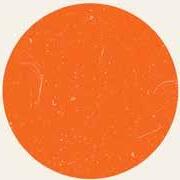




Have access to a gym, pool or exercise equipment? Try these activities:
Grab a bicycle or use a stationary one at the gym.

Dance
Look up local dance clubs or learn a new routine online.
We may sometimes feel trapped and isolated by our chronic condition, but that doesn’t mean we can’t actively support others in need. We can still build a sense of community by cycling, jogging, running or moving in a way that feels good while supporting a cause. The point is to become involved and move, as it’s a good way to ease chronic pain, connect with those going through similar experiences, promote awareness of various conditions and raise funds for charities.


Instead of or in addition to laps, try walking in water or water aerobics.
Get your heart rate up without impacting joints.
Whether in-person or virtually, there is a way for folks at every fitness level to make connections and increase awareness of a need or raise money for a charity. Consider joining a local group or look online to find fitness challenges to participate in.
. . . . . . . . . . . . . g o a w a y . . . . . . . .
Remember, before changing an exercise routine, it’s important to talk with your health care providers about your physical activity level to make sure the change fits your needs.
In 2001, the American Chronic Pain Association led more than 80 organizations to establish Pain Awareness Month in September.




As the weather gets warmer and the days get longer, outdoor grilling is a popular way to dine and bond with family and friends. For many, the smokey smell is enough to make your mouth water. However, ensuring a safe and delicious grilling session requires grill etiquette, food safety and proper cooking techniques.
Here are a few tips on how to elevate your grilling skills while keeping the health and safety of yourself and others a top priority:
Cleaning a grill before and after using it not only ensures better-tasting food, but also prevents harmful bacteria from contaminating your meal. Before igniting your grill, make sure the grates are free of rust and old food particles.
A coil brush, flat scraper or even crumpled aluminum foil can help break down food buildup. Steer clear of wire brushes whose bristles can snap off as you’re cleaning the grill, stick to its surface and sneak their way into your food.
Defrosting frozen meat correctly helps prevent foodborne illnesses. Thawing in the refrigerator overnight is the safest method. If you’re short on time, you can use your microwave’s defrost feature. Never defrost meat on a counter at room temperature.
Creating a safe zone around the grill prevents accidents and ensures everyone, including pets, enjoys the barbecue. Never leave the grill unattended.
Using the same utensils and surfaces for raw and cooked meats and veggies is a very common grilling mistake. Instead, use one set of cutting boards and utensils for raw meat and another set for vegetables and cooked foods to avoid cross contamination.

Using a meat thermometer ensures your grilled items are safe to eat without guessing. For burgers, insert the thermometer into the side to reach the center without touching the grill. Ground meats should reach an internal temperature of 160° F for safety. For larger meats, ensure the probe is in the thickest part of the meat and doesn’t touch the bone.

August is National Immunization Awareness Month!
Go to cdc.gov/rsv to find more information about recommended RSV vaccines.
With fall right around the corner, many of us are getting ready for our yearly vaccines. We prepare ourselves and our families for the usual – a flu shot and the latest COVID-19 vaccine, to name a few. But there’s another contender to watch out for – respiratory syncytial virus (RSV).
RSV is a common respiratory virus that typically results in mild symptoms, similar to a cold. These symptoms usually appear in stages and not all at once. In very young infants with RSV, the only symptoms may be irritability, decreased activity and breathing problems.
Some signs of an RSV infection are:





Most people who get an RSV infection will have a mild illness and will get better in about one to two weeks. But some people are more likely to develop a severe RSV infection and may need to go to the hospital.
Severe infections include bronchiolitis (inflammation of the small airways in the lungs) and pneumonia (an infection of the lungs).
RSV can also make chronic health problems worse. For example, people with asthma may have asthma attacks because of an RSV infection, and people with congestive heart failure may have more severe symptoms triggered by RSV.
By the time they turn 2 years old, almost all children will have had an RSV infection.
Like most viruses, RSV can spread in a few ways:
Direct contact
This means that if someone who has RSV coughs or sneezes near you, the droplets from their cough or sneeze can get into your eyes, nose or mouth.
Surface contact
RSV can also spread if you touch something that has the virus on it, like a doorknob, and then touch your face before washing your hands.




is on the rise
The RSV hospitalization rates for the last season were the highest on record. On average, RSV causes around 58,000-80,000 hospitalizations among young children and 60,000-160,000 among seniors annually. Most of these hospitalizations happen during fall and winter.
If you haven’t gotten the vaccine yet and you decide with your doctor to get one, the best time to get it is in late summer or early fall. That’s before RSV usually starts to spread.
If someone falls under one of these categories, a vaccine or immunization may be available and recommended.

The following groups of people are more likely to have serious complications if they get RSV:
Premature infants
Infants up to 12 months
Children with weakened immune systems or neuromuscular disorders
Children younger than 2 years old with chronic lung disease or congenital heart disease (if present since birth)
How can RSV be prevented?
Pregnant women
Adults with chronic or underlying medical conditions
Adults living in nursing homes or long-term care facilities
Adults 60 years and older
A vaccine or immunization is the best way to protect some people from RSV, depending on their age and health risks. But for others who are less likely to get a serious case of RSV, there are simple things they can do every day to lower their chances of catching and spreading the virus.
Here are some tips to help reduce the spread of RSV and other respiratory illnesses:
If you’re feeling unwell, stay home.
Use a tissue or your shirt sleeve, instead of your hands, to cover coughs and sneezes.
Regularly wash your hands with soap and water for a minimum of 20 seconds.
Try not to touch your face with unwashed hands.
Regularly clean frequently touched surfaces like doorknobs and electronic devices.
Breastfeeding is a natural way to provide babies with nourishment. However, many new moms may feel overwhelmed and discouraged on this journey. Here’s what to expect while breastfeeding and a few practical tips to overcome common hurdles.
It’s recommended that babies receive breast milk exclusively for the first six months and continue receiving it along with other age-appropriate foods until the age of 1.
Breastfeeding offers many benefits for mom and baby:
It contains a complete nutritional package to meet your baby’s ever-changing needs.
It has antibodies that strengthen your baby’s immune system, reducing ear infections, allergies and respiratory issues.
Breastfed babies are less likely to develop eczema, diabetes and sudden infant death syndrome (SIDS).
For mom, breastfeeding can aid in postpartum weight loss and lower the chance of breast/ovarian cancer and other diseases.
It’s important to know that during the early days and weeks of breastfeeding, your breasts can become engorged and tender as your milk supply regulates to meet your baby’s needs. Newborns typically feed 8-12 times or more in a 24-hour period. This on-demand feeding pattern is crucial for establishing a healthy milk supply.
As for baby’s stools, expect frequent, mustard-yellow, seedy bowel movements, a sign that they are efficiently digesting your nutrientrich breast milk.
If you opt to pump instead of or in conjunction with breastfeeding, there are a few things to keep in mind to ensure success:
Try to keep a regular pumping schedule to stimulate milk production and maintain a steady supply. Stay hydrated and get adequate rest, just as you would if you were nursing.
When storing breast milk, remember that it can be kept at room temperature for up to four hours and refrigerated for four days. It can be stored in the freezer (at 0° F or colder) for up to 12 months, although using it within six months is best.
When it comes to pumping and storing breast milk on the go, whether it’s for work or travel, here are a few things to remember:
Use steam bags made specifically for cleaning breast pump parts. Make sure the pump you have can be safely steamed in the microwave.
Learn how to hand express directly into milk collection containers for times when using a pump may not be possible.
If traveling or working, store milk in an insulated cooler for up to 24 hours to maintain its freshness.
To thaw frozen milk, transfer it to the refrigerator overnight or soak the container in a bowl of warm water. Once thawed, breast milk can be refrigerated for up to 24 hours, but don’t refreeze it.
Avoid using the microwave to warm breast milk, as it can destroy valuable nutrients and create hot spots.
Stay hydrated by drinking plenty of fluids, and eat a healthy diet to support milk production. Additionally, getting plenty of rest is essential for your overall well-being and milk production.
By understanding common hurdles and using these simple tips, you can navigate your breastfeeding journey with confidence. Check if your benefit plan includes a Maternity CARE program for extra help with breastfeeding.
A milk duct can become plugged if a baby doesn’t feed regularly, if feedings or pumpings are skipped, or if a mother’s bra is too tight. Try these options when you have a clogged duct:
Apply a cold pack or ice pack to the affected area.
Try over-the-counter pain medicine to manage discomfort.
Wear a comfortable bra.
Rest as if you were sick and focus on caring for yourself and your baby.
Don’t massage, apply heat or overfeed.
While most moms produce enough milk, some may have low milk production. Factors such as taking oral birth control, past surgeries or cancer treatments, an incomplete latch due to positioning or tongue tie, certain medications or baby’s sleep schedule can contribute to low supply. Low milk supply is not your fault and should not be a cause for guilt or feelings of failure. Remember to:
Seek support from a lactation consultant to address underlying issues.
Supplement with formula to ensure your baby receives adequate nutrition.
Practice self-compassion. Feeding your baby, regardless of the method, is what truly matters.
Nipple soreness may be caused by improper latching, frequent feedings or dryness.
Avoid harsh soaps, which can cause dryness and cracking.
Rub a little breast milk on your nipple or apply 100% pure lanolin after feeding.
Try chilled glycerin pads to help soothe and heal cracked nipples.
Boost your well-being with a dose of
You may have never really thought about it, but creativity is the act of turning new and imaginative ideas into reality or a result. When you do or make things that give you pleasure, you’re being creative.


Almost everybody is creative, whether we recognize it or not. If you’re thinking, “I’m not creative at all,” here’s an exercise to try.
Grab a pen or pencil and a sheet of paper. Make a very simple shape on it, such as a half circle, a full circle or loop. Then spend a few minutes expanding on that shape to create a drawing of whatever comes to mind.
It doesn’t matter whether you think your results are “good” or not. Trying this exercise is a creative act. And being creative at any level can improve your overall health.


Simply doodling on a notepad or coloring in an adult coloring book improves brain function, mental health and physical health.
5 ways creativity impacts your health
1. It triggers motivation and happiness
There are probably several times in your day when you really get into a project – whether it’s at work or at home. It’s that time when you’re completely absorbed in your tasks and time seems to fly by. That’s called “flow.”
When you’re in the “flow,” your anxiety is reduced, your mood lifts and your heart rate slows down.

Repetitive creative motions such as drawing, writing, knitting, painting and even experimenting with a recipe, can help activate flow. And that flow creates a result.
When you succeed at creating a result, your brain is flooded with dopamine – a chemical released into the brain that triggers motivation and happiness.

Studies have shown people who regularly record their thoughts in a journal actually boost the functions of their immune system. Experts are not sure how it works, but they say writing increases your CD4+ lymphocyte count, which is key to your immune system. Listening to music also has a rejuvenating effect on your immune system.

Creativity can help reduce stress, depression and anxiety – all connected to overall mental health. Engaging in a creative activity, such as crafts, can help your mind focus and has been compared to meditation, which has tremendous calming effects on your body and brain. Negative emotions can be calmed with writing, and studies have shown that people experiencing trauma can benefit from drawing or painting to help express those emotions.

One particular type of creativity improves the connectivity between your left and right brain – playing music. While the left brain controls motor functions, the right brain focuses on melody. When the two hemispheres of the brain communicate, cognitive function improves.

While there is no cure for dementia, studies have shown that dementia patients benefit from a burst of dopamine. Researchers report that being creative (and thus releasing dopamine) helps those patients reduce feelings of isolation and depression. They also noticed a sharpening of senses and an enhancement of individual personalities.
Embarking on a creative task or project may take a little push –especially if you think you aren’t creative. Some activities can cost nothing, while others may force you to dole out a little cash. But give it a try and see how you feel before, during and after your creative journey. It might start a lifelong hobby.

• Making arts and crafts
• Building models
• Landscaping
• Drawing/painting

• Photography
• Scrapbooking
• Making collages
• Dancing
• Acting or singing
• Cross stitching and embroidery
• Sewing
• Flower arranging
• Gardening
• Home renovating/ redecorating
• Jewelry making
• Knitting
• Woodworking
• Fashion

It’s amazing how one creative activity uses many other creative outlets.
For example, if you build a toy model home, you can do some interior decorating, painting, woodworking, sewing and gardening.

You may like to work on cars in your spare time.
You may know all of your sports team’s statistics.
You may like to teach other people new skills.
Remember:
Whatever gives you joy is your creative outlet.
Finding a network provider on umr.com or the UMR app has

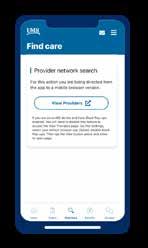
Go to umr.com and select Find a provider
Look for the name of your provider network on your ID card
Don’t have your ID card handy?
That’s OK. If you sign in to umr.com or the UMR app, you will be directed to your in-network provider listing.
Begin a search for your provider network using our alphabet navigation, or type the name into the Search box

If you’re preparing yourself and/or your family for a week’s worth of healthy snacks in a hurry and in a crunch, we have some ideas to make it quick and easy on you.

You might remember your grandparents saying, “You’ll ruin your appetite!” Well, that’s not always true. If you snack all day long, sure you might spoil your dinner, but well-timed, healthy snacks won’t sabotage mealtime. In fact, they might give you the pick-me-up you need until the next meal.
When you’re hungry between meals and your brain and stomach are wanting some nutrition, denying yourself a snack will most likely lead you to overeat when it is mealtime. Timing your day to include healthy snacks can have benefits, such as maintaining energy, focus and a balanced diet.

It’s easy and tempting to grab a handful of chips, cookies or candy. And that’s not always a terrible thing. In moderation, a sugary or salty treat is OK. But too much sugar and processed foods can add up over time – to your waistline and your overall health. There are tons of healthy snack recipes, and many take time and multiple ingredients to prepare. If you have the time to prepare yummy options, such as cowboy caviar or homemade granola bars, go for it. Hop online and you’ll find plenty of excellent recipes.
Take the time to prepare for the mid-day cravings –whether for you or the family. Choose whole foods like:
• Raw veggies
• Fresh fruit
• Whole-grain pita bread or crackers
• Nuts and seeds
• Low-fat dairy

Beware of snacks with empty calories and added sugar. Active bodies are OK with snacks between 200-300 calories. Less active folks should stick to 200 calories or fewer.
Foods high in fiber take longer to digest, and therefore help you feel satisfied longer. Protein is an energy source for your body and is important for an overall healthy diet.

Drinking water not only hydrates you, but it quenches your thirst – which helps with snacking. Why? It’s common to think you’re hungry when you’re really thirsty. Drinking water can help you avoid mistaking hunger for thirst. Also, water combined with high-fiber snacks makes the fiber expand in your stomach, which curbs your hunger and improves digestion.
Here’s a go-to list for quick, out-the-door or between-meetings snacks that require little to no preparation.
• Apple chips
• Dehydrated fruits (cranberries, apricots, bananas, raisins)
• Keto-friendly tortilla chips or cookies
• Roasted chickpeas or pumpkin seeds
• Fig bars
• Snack bags of granola
• Protein or granola bars
• Squeezable applesauce pouches
• Mini meat sticks
• Mini fruit bars
• Frozen grapes
Emotions can sometimes make you want to grab a snack. If you’re stressed or emotional, try to recognize that and don’t mistake it for hunger. Doing so can make you overeat and can be bad for your overall diet. The same goes when you’re bored. Pay attention to the times of day you’re usually hungry and plan accordingly.

Summertime brings out the joy in outdoor activities – you may play sports, swim, hike or simply chill in your backyard. Whether it’s sunny or cloudy outside, it’s equally important to protect yourself from ultraviolet (UV) radiation.
UV rays, including ultraviolet B (UVB) and ultraviolet A (UVA), can damage not only your skin, but also your eyes.
AND ...
Some chronic illnesses and medications can cause sun sensitivity. Be sure to read all your medication labels for information.
How much sun exposure your skin can handle depends on many factors:
• How near you live to the equator. Locations closer to the equator, like Florida, have higher levels of UV radiation.
• The amount of reflection. Sun reflecting off surfaces like pavement, snow and water makes the rays even stronger.
• The time of day. UV radiation is strongest from 10 a.m. to 4 p.m., so groups like the American Cancer Society recommend you reduce time in direct sunlight during these hours.



Five or more sunburns doubles your chance for melanoma, a type of skin cancer. So follow these safety tips year-round, but especially on those long summer days.*
Thought you wouldn’t be in the sun long? Always be prepared by making an easy-to-grab go-kit. Pack a bag with:
Eyes, just like your skin, get damaged with too much sun exposure. Sunglasses with UV protection reflect and block harmful UV light. A wide-brimmed hat (at least a two-to-three-inch brim) also shades your eyes from harmful UV rays. Even some contact lenses block UV rays.
There are a variety of sunscreen options, from lip balm to spray, all of which should be reapplied at least every two hours (or more if swimming or sweating).
Note: Be sure to check the expiration date on your sunscreen of choice. Expired sunscreen can be less effective in protecting your skin.
Ever get a sunburn on your scalp or ears? Don’t forget to protect these sensitive areas. A widebrimmed hat will shield your head from the sun while also protecting your eyes.
Not all clothing is created equal when it comes to blocking UV rays. The sun’s rays penetrate sheer and light-colored fabric. That’s why organizations like The Skin Cancer Foundation suggest wearing darkor bright-colored, densely woven (e.g., denim) clothes. Even better is clothing that is loose-fitting and has an ultraviolet protection factor (UPF) –protection against UVB and UVA rays – of 30.
*According
For full protection, always reapply sunscreen every two hours (40-80 minutes if sweating or swimming). Never use expired sunscreen. It can be less effective in protecting your skin.
The American Cancer Society says to use roughly one ounce of sunscreen to cover an adult body fully.
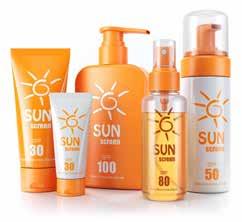
Broad-spectrum sunscreen protects against UVB and UVA rays.
The Skin Cancer Foundation says UVB rays cause sunburns while UVA rays cause tanning and premature aging – both are harmful to your skin.
SPF 30 or higher is needed to protect against UVB rays.
As the American Cancer Society explains, a sun protection factor (SPF) of 30 filters out about 97% of UVB rays, SPF 50 about 98% and SPF 100 about 99%.
You should drink 24 to 32 ounces of water for every hour you spend in the sun.
Water-resistant sunscreens are best when you’re swimming or sweating. These sunscreens work up to 40 minutes in water (e.g., sweating or swimming), while very waterresistant sunscreens work up to 80 minutes before reapplication is needed. Remember, no sunscreen is “waterproof” or “sweatproof.”
Physical or chemical active ingredients can make a day in the sun fun or cut your adventure short. While either type protects you, folks with sensitive skin should opt for physical sunscreens, per the American Academy of Dermatology Association.
• Physical sunscreens block the sun’s rays like a shield. Think of the lifeguards with white noses –they wore zinc oxide sunscreen. Titanium dioxide is another common ingredient.
• Chemical sunscreens absorb the sun’s rays and are generally easier to rub on. Common ingredients are avobenzone, homosalate, octinoxate, octisalate, octocrylene and oxybenzone.

Protecting yourself also guards you against illnesses like heat stroke and cancer.
The type of sunscreen you use is based on your preference, but some work better based on where you use them:
Cosmetics
Don’t replace sunscreen but are handy for everyday use
Lip balm
A SPF of 20 or higher is recommended to protect your lips
Stick For around your eyes
Cream Useful for your face or if you have dry skin
A less greasy choice when applying to large areas of skin Gel
An easy option for hairy areas like your scalp
Spray Quick to apply but be mindful of proper application and avoid inhalation
Watch for indications of heat stroke.
Signs to look for:
• Body temperature of 103° F or higher
• Confusion
• Damp, dry, red or warm skin
• Dizziness
• Fast pulse
• Fatigue
• Headache
• Loss of appetite
• Nausea
• Passing out
• Vomiting
• Lower your temperature with water, ice or removing clothing.
• Move to a cool place to rest.
• Only drink cool fluids if alert.
Heat stroke is a life-threatening emergency.
It’s hard to quit smoking if you’re acting alone. Smokers usually have a much better chance of quitting with a support program. Stop smoking programs are offered by hospitals, health departments, community centers, work sites and national organizations.
You can find out about smoking cessation programs from:
• Your health care provider or local hospital
• Your health insurance plan
• Your employer
• Your local health department
• The National Cancer Institute Quitline at 877-448-7848
• The American Cancer Society Quitline at 800-227-2345
• The American Lung Association, which has online and phone advice programs
• State programs in all 50 states and the District of Columbia at 1-800-QUIT-NOW (1-800-784-8669)
Call the number on the back of your ID card to find out if your health plan offers a Tobacco and Nicotine Cessation program.
The best smoking cessation programs combine numerous approaches and target the fears and problems you have when quitting. They also provide ongoing support for staying away from tobacco.
Be wary of programs that:
• Are short and offer no help over time
• Charge a high fee
• Offer supplements or pills that are only available through the program
• Promise an easy path to quitting
Let your friends, family and coworkers know of your plans to stop smoking and your quit date. It helps for people around you to be aware of what you are going through, especially if you are grumpy. You may also want to seek out other types of support, such as:
• Your family doctor or nurse
• Groups of ex-smokers
• Nicotine Anonymous
Your health care manager at your fingertips

Things to do may prompt you to:
• Review and complete health actions
• Provide/verify your email address
• Provide other insurance information
• Update security questions
• Review new claims
Sign in to umr.com to see a personalized to-do list that highlights the steps YOU need to take to stay on top of your health and keep your benefits up to date. Personalization is based on your company’s health benefits plan and the programs you are eligible for. Visit umr.com today to take advantage of this time-saving feature!
• Be promptly alerted to any denied claims
• Provide accident details
• Go paperless
• Get to know UMR
• Take your clinical health risk assessment (CHRA)
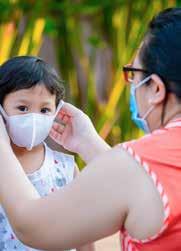



Where you go for medical services can make a big difference in how much you pay and how long you wait to see a health care provider. Explore the following information to help you decide the appropriate setting for your care.
1 2 3 What you need to do:
Locate your member ID card
Find a provider
On your member ID card, you’ll find:
• Your PPO network
• Contact number
• Pharmacy contact, if applicable
You can also visit our website at umr.com.
Go to the CDC for the latest information on COVID-19, including vaccines, cases and data, how to protect yourself and what to do if you are sick.
Determine the severity of the symptoms and choose the provider that works for you.
If you are severely ill and/or it’s an emergency, call 911.
Retail clinics, sometimes called convenience care clinics, are located in retail stores, supermarkets and pharmacies. You can find over-the-counter medications, and you can talk to your pharmacist for help.
TIMES TO GO:
• Vaccinations or screenings
• Sinus infections
• Minor sprains, burns or rashes
• Headaches or sore throats
Expect to wait 15 minutes or less
Average cost $50-$100 (per service for non-employer sponsored facilities)
Urgent care centers, sometimes called walk-in clinics, are often open in the evenings and on weekends.
TIMES TO GO:
• Sprains and strains
• Sore throats
• Minor broken bones or cuts
• Minor burns
• Minor infections or rashes
• Earaches
Expect to wait 20-30 minutes
Average cost $150-$200 (for non-employer sponsored facilities)
(NOT URGENT)
Seeing your doctor is important. Your doctor knows your medical history and any ongoing health conditions.
TIMES TO GO:
• Preventive services and vaccinations
• Medical problems or symptoms that are not an immediate, serious threat to your health or life
Expect to wait 1 day to 1 week or more for an appointment
Average cost $100-$150
Visit the ER only if you are badly hurt. If you are not seriously ill or hurt, you could wait hours, and your health plan may not cover non-emergency ER visits.
TIMES TO GO:
• Sudden weakness, trouble talking or blurred vision
• Large open wounds
• Difficulty breathing
• Severe head injury
• Heavy bleeding
• Spinal injuries
• Chest pain
• Major burns
• Major broken bones
Expect to wait 3-12 hours (for non-critical cases)
Average cost $1,200-$1,500
Grill whole bell peppers along with steak, then add pear slices, and you have the foundation of a delicious and colorful Italian-influenced salad.
For salad
• 2 cups (4 oz) white-wheat rotini pasta (uncooked)
• 1 yellow bell pepper
• 1 red bell pepper
• 1/2 teaspoon olive oil
• 12 ounces boneless choice beef top sirloin
• 2 pears
• 3 cups arugula
• 1/4 cup crumbled Gorgonzola cheese
For vinaigrette
• 1 tablespoon olive oil
• 3 tablespoons distilled vinegar
• 1/4 cup 100% white grape juice or apple juice
• 1/4 teaspoon salt (optional)
• 1 tablespoon Italian herb blend, salt-free

1. In a small bowl, whisk olive oil, vinegar, grape or apple juice, salt and herb blend.
2. Boil water and cook pasta according to package instructions. Drain pasta, rinse in cool water.
3. Heat grill, rub peppers with 1/2 tsp olive oil. Grill whole peppers, turning as needed, until skin begins to brown and bubble. At the same time, grill beef sirloin to 145° F, turning once. Remove from grill, let cool slightly.
4. Slice peppers into strips, discarding seeds and stem. Cut sirloin across the grain into thin slices. Slice pears into thin wedges.
5. Toss arugula and pasta in large bowl.
6. To serve, evenly divide pasta-arugula onto four plates, arrange beef, peppers and pears on top, drizzle with vinaigrette and sprinkle with crumbled Gorgonzola cheese.
For more healthy recipes, visit MyPlate Kitchen.
Recipe courtesy of U.S. Department of Agriculture.

El sitio web Seguro para miembros umr.com esta disponible en español. 1 2 3
Simplemente, inicie sesión en umr.com con su nombre de usuario y contraseña.
Usted verá un menú desplegable en la parte superior de su pantalla de inicio con múltiples opciones de idiomas, que incluye español.
(Fictionalized data)
Seleccione la opción de español y verá como en su pantalla el contenido aparecerá traducido al español.
Para obtener información de salud confinable, visite umr.com y seleccione Health education library (Biblioteca de educacion en salud).
Para nuestros miembros de UMR que hablan español, los Institutos Nacionales de Salud (NIH por sus siglas en inglés) es un gran recurso para obtener información sobre temas de salud, desde alergias hasta Zika. Cada mes, el boletín electrónico destaca nuevos recursos para aquellos que hablan español, y sus amigos y familiares. Puede visitar el portal y suscribirse al boletín en salud.nih.gov

UMR is a third-party administrator (TPA), hired by your employer to help ensure your claims are administered correctly, so your health care costs can be kept to a minimum and you can focus on your health and well-being.
UMR is not an insurance company. Your employer pays the portion of your health care costs not paid by you.
UMR is a UnitedHealthcare company. © 2024 United HealthCare Services, Inc.